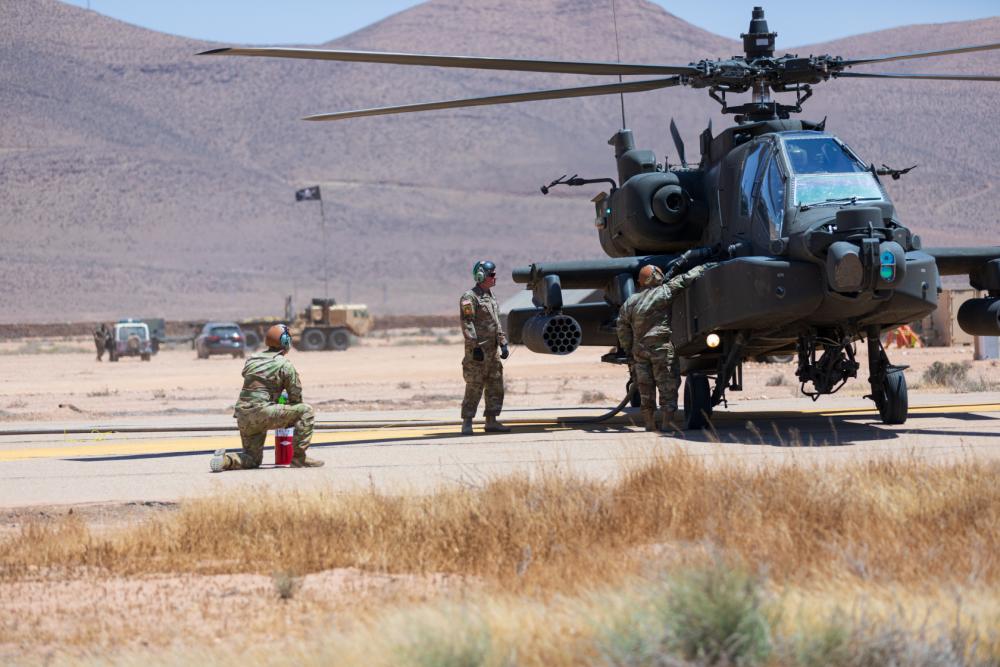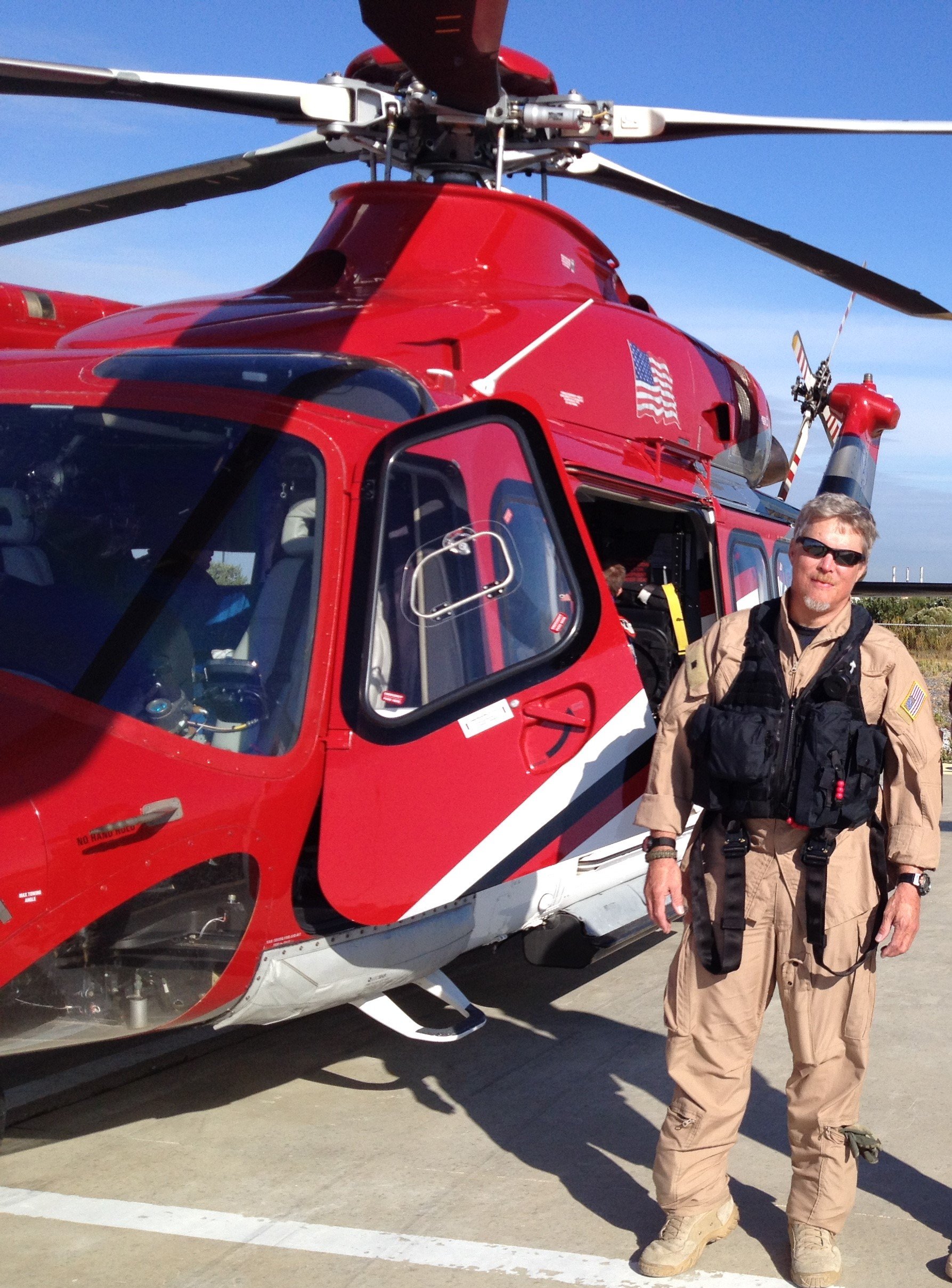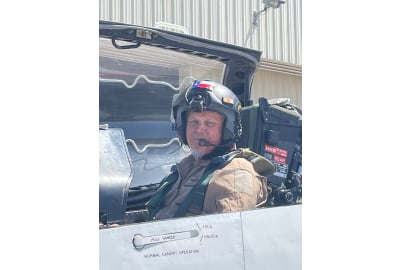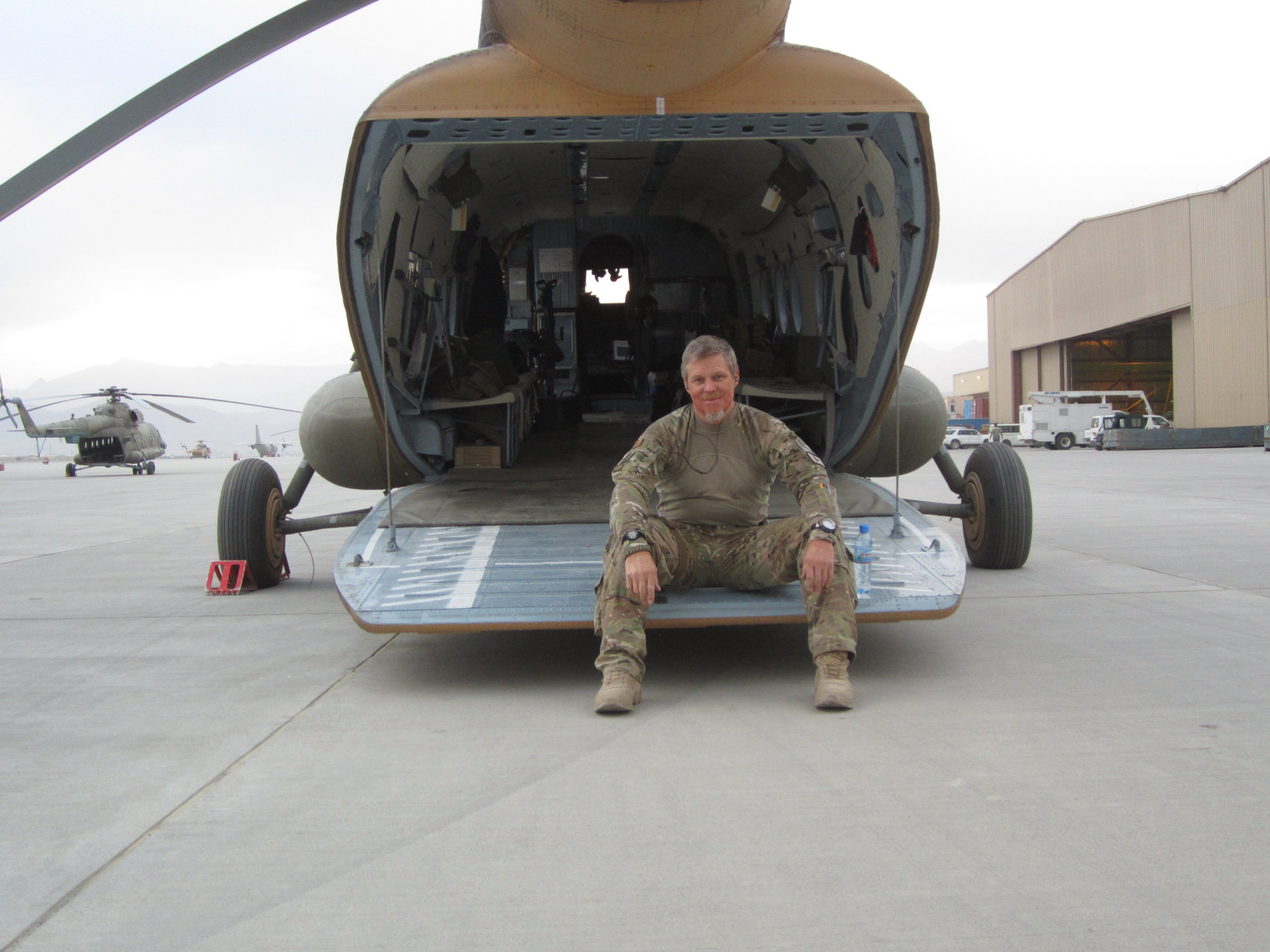At around 3:30 in the afternoon of April 13, 1994, active-duty Apache Pilot Skip Tackett was receiving fuel while practicing a mission called “Deep Attack” when he heard the words over his radio that no pilot ever wants to hear: “You are on fire, get out!”
What followed were 18 seconds of pure hell that Tackett was able to survive based on remarkably metered thinking, bravery, gear, and a will to survive to watch his four young boys grow up.
Skip and his co-pilot were the first aircraft in line to refuel, which meant they were receiving fuel at full pressure—350 gallons per minute. The emergency break-away connector was incorrectly installed and cracked open when the hose jumped from the high pressure. The running Apache was immediately covered in fuel.
“The best way I can describe it is imagine driving through a very heavy thunderstorm without windshield wipers on—that's how much fuel I could see coming down,” Tackett exclaimed.
By his estimation, it was 30 to 40 gallons of jet fuel that covered the helicopter. As Tackett tried to figure out what was happening, the aircraft to his left yelled into the radio that he was on fire.
Tackett was now stuck inside a gigantic fireball and had to create his own playbook on how to exit it alive. “Nobody had ever discussed an accident like this with any of us."

In spite of the intensity of the situation, Tackett found the wherewithal to make sure his co-pilot got out, shut down the engines, turn the rotor brake on, and try to figure out what else to do.
While the inside of the aircraft was not on fire yet, he knew it soon would be, and he had to get out of the helicopter on his own because they were at a remote fueling site where rescue would not be there in time to get him out.
“If I was going to survive, it was going to be because I was making it happen” - Skip Tackett
As he tried to exit, he felt intense pain in his face, which felt like it began to melt because it was the only exposed part of his body, and tried not to breathe, knowing how dangerous it was to breathe in extremely hot gasses from a fire. When he finally made it out and couldn’t go any further, "Fortunately, that was just outside of the fireball," Tackett said.
Tackett survived but suffered 2nd and 3rd-degree burns to 42 percent of his body surface area. His recovery was brutally painful and lasted years, but he was alive. It seems miraculous, but he jumped through a massive ball of 1200-degree flame and lived to tell about it.
Tackett’s take is less supernatural and more straightforward. He attributes his ability to make so many right choices in such a high-stakes situation to his military training.
When Tackett first came into the military in 1979, he enlisted to be an Airborne Ranger, which now falls under US Special Operations.
"The training that I received from mostly Vietnam Veterans was attention to detail, how to think on your feet, and how to react quickly in a tense situation was where it all started“
I was taught to think on the move, and that is what saved my life.” He knows that the nature of this accident did leave a lot of variables open to chance that could have ended his life, but he is also sure that the way he was trained to think helped him avoid some pitfalls that would have killed him. He also attributes his survival to the gear he was wearing and how he was wearing it. “There is no doubt in my mind that if I wasn’t wearing Nomex equipment correctly, I wouldn’t be here talking to you,” - Skip Tackett
Skip got back to flying two years after this accident and still puts in some serious flight time. His main job is COO for Brunner Aerospace, which is the primary helicopter training facility for the US Air Force, and he also teaches civilians to fly helicopters.
On top of managing operations, he is also an active flight instructor, averaging four to six hours a day in an aircraft.
The Importance of Flame Resistant Clothing and Lessons Learned
Tackett brings what he learned on that day in 1994 to his teaching and really hammers home the importance of high-quality FR gear and wearing it correctly. “I talk a lot to my students about proper wear of Nomex garments,” Tackett said.
He teaches layering Massif base layers beneath a Massif flight suit to make sure to minimize heat transfer in case of an emergency.
He also really emphasizes that students need to cover as much of their bodies with their FR gear as they can.
“I didn’t have time to stop and say ‘oh, my aircraft is on fire, I am going to stop and roll my sleeves down, I need to put my collar up, I need to get my gloves on.’ I didn’t have time for all of that. When survival is on the line, you don’t have time to correct things you didn’t do right the first time,”
Nowadays, he wears Massif flight suits and undergarments for his personal safety while he flies—every piece of clothing he wore the day he was interviewed for this story was Massif except for his socks.
“Massif is at the forefront of all of this fire-resistant technology. It is phenomenal,” Tackett said. “I’m not going through what I went through again, so I make sure I am as prepared as I can be.”

The fact that Skip chooses Massif gear as his go-to FR protection and suggests his students wear it as well speaks volumes to the quality of what we have built.
“I have gotten into some heated discussions about safety and costs of equipment, and nobody has been able to counter my argument,” Tackett said. “They haven’t been through what I have.”
He is one of the national experts on the importance of FR gear in a military flight setting.
Over the years, he has fought hard for the military to give its pilots the best FR clothing possible.
His own terrifying story of survival gives him even more credibility.
Don't compromise on safety - choose high-quality flame resistant clothing that meets industry standards and regulations. Invest in durable, comfortable, and reliable FR clothing that can withstand the toughest conditions and keep you safe on the job. Don't wait until it's too late.







